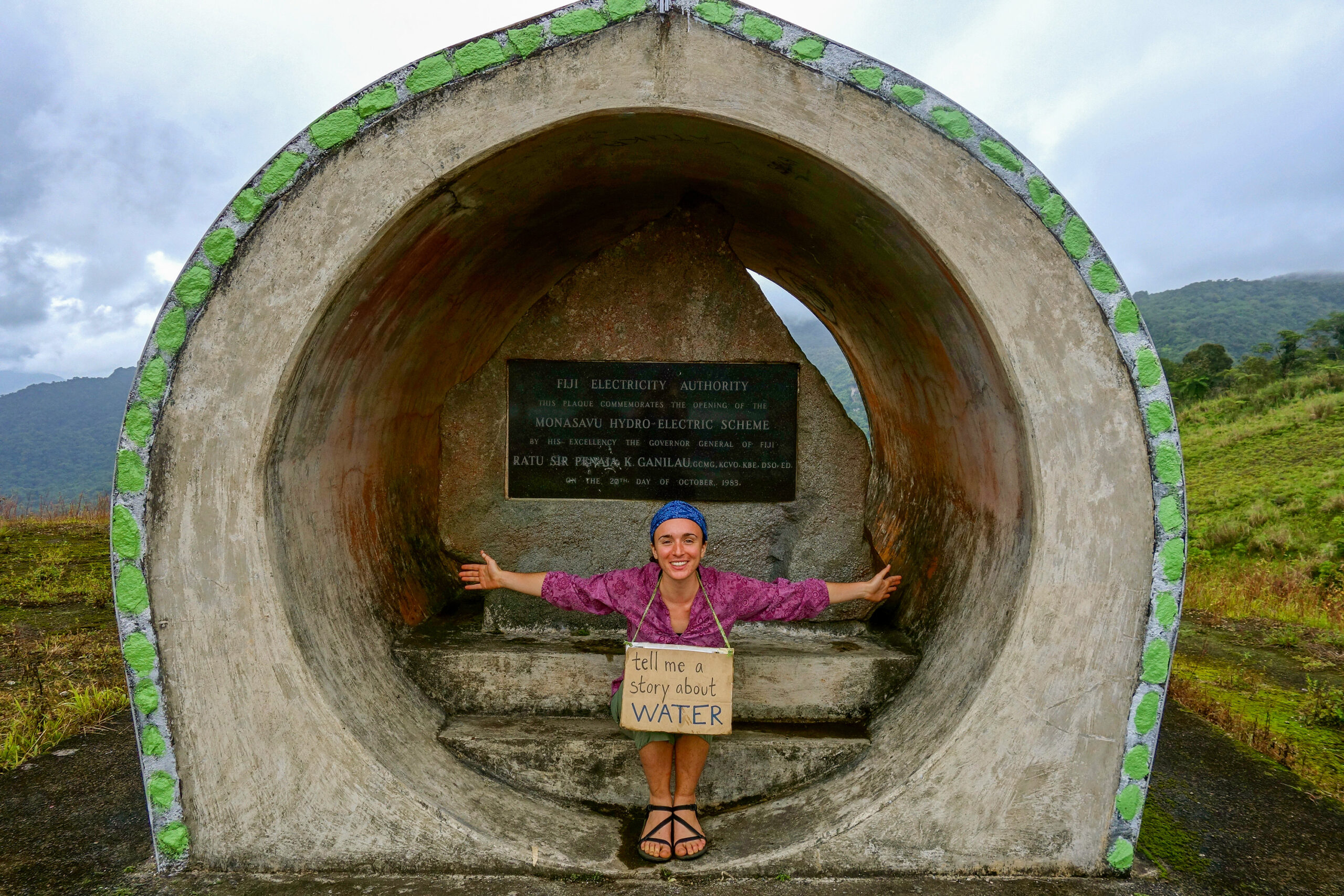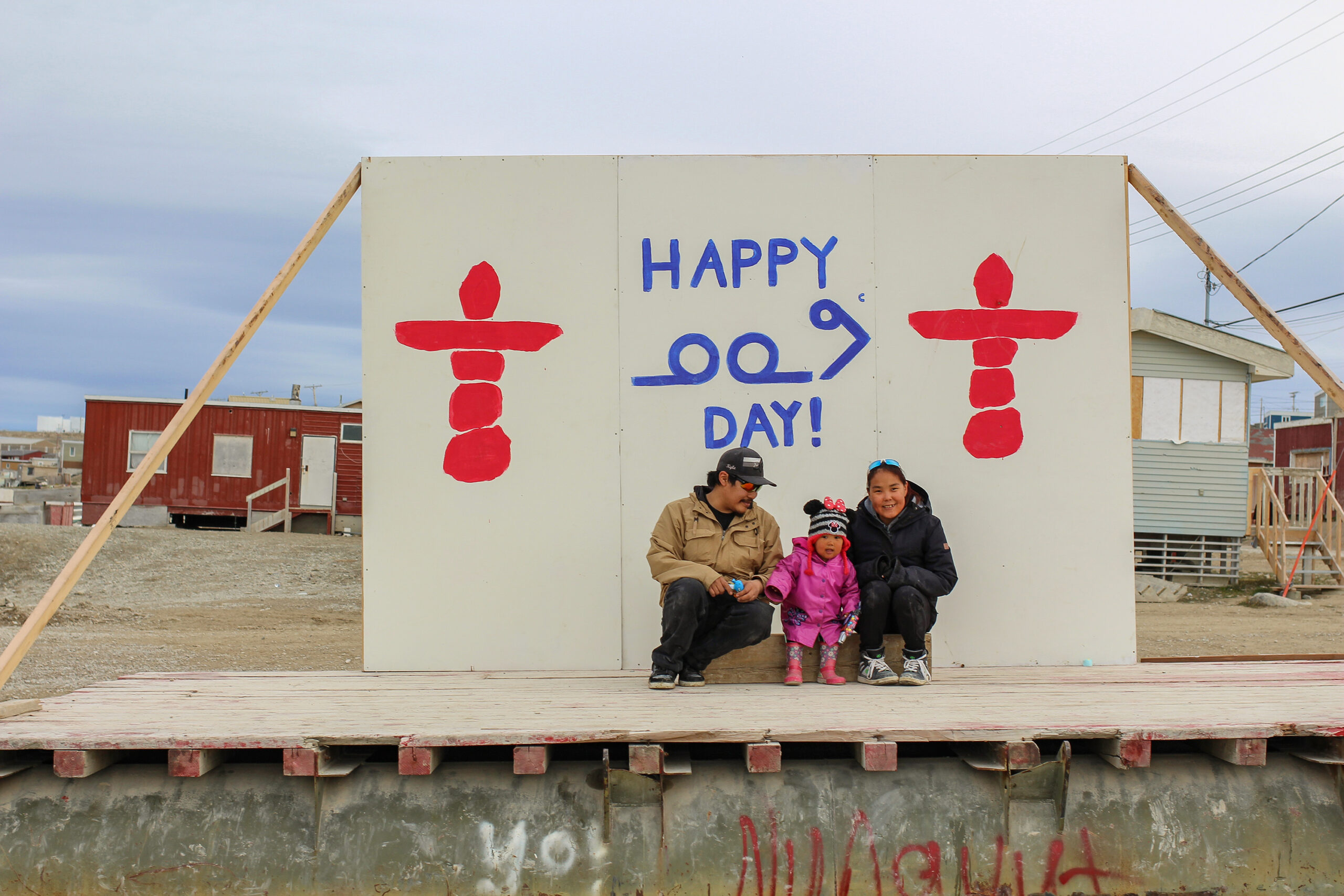Another tool in the fight against climate change: storytelling
It might sound strange to think of storytelling as a climate solution, but after spending five years documenting 1,001 voices on climate change in 20 countries, I believe one of the most powerful forms of climate action is to listen deeply to people already affected by the crisis. To ensure that solutions actually help communities most at risk, we must first hear their stories.
Climate change is an environmental justice issue. The people most harmed by the problem are often those least at fault. Solutions that ignore people already living with the impacts of climate change—most of whom live in the Global South—risk perpetuating the same systemic inequality that delivered this mess to their doorsteps in the first place.
There is a lot of shouting about climate change, especially in North America and Europe. This makes it easy for the rest of the world to fall into a kind of silence—for Westerners to assume that they have nothing to add and should let the so-called “experts” speak. But we allneed to be talking about climate change and amplifying the voices of those suffering the most.
Climate science is crucial, but by contextualizing that science with the stories of people actively experiencing climate change, we can begin to think more creatively about technological solutions.
This needs to happen not only at major international gatherings like COP26, but also in an everyday way. In any powerful rooms where decisions are made, there should be people who can speak firsthand about the climate crisis. Storytelling is an intervention into climate silence, an invitation to use the ancient human technology of connecting through language and narrative to counteract inaction. It is a way to get often powerless voices into powerful rooms.
That’s what I attempted to do by documenting stories of people already experiencing the effects of a climate in crisis.
In 2013, I was living in Boston during the marathon bombing. The city was put on lockdown, and when it lifted, all I wanted was to go outside: to walk and breathe and hear the sounds of other people. I needed to connect, to remind myself that not everyone is murderous. In a fit of inspiration, I cut open a broccoli box and wrote “Open call for stories” in Sharpie.
I wore the cardboard sign around my neck. People mostly stared. But some approached me. Once I started listening to strangers, I didn’t want to stop.
That summer, I rode my bicycle down the Mississippi River on a mission to listen to any stories that people had to share. I brought the sign with me. One story was so sticky that I couldn’t stop thinking about it for months, and it ultimately set me off on a trip around the world.
“We fight for the protection of our levees. We fight for our marsh every time we have a hurricane. I couldn’t imagine living anywhere else.”
I met 57-year-old Franny Connetti 80 miles south of New Orleans, when I stopped in front of her office to check the air in my tires; she invited me in to get out of the afternoon sun. Franny shared her lunch of fried shrimp with me. Between bites she told me how Hurricane Isaac had washed away her home and her neighborhood in 2012.
Despite that tragedy, she and her husband moved back to their plot of land, in a mobile home, just a few months after the storm.
“We fight for the protection of our levees. We fight for our marsh every time we have a hurricane,” she told me. “I couldn’t imagine living anywhere else.”
Twenty miles ahead, I could see where the ocean lapped over the road at high tide. “Water on Road,” an orange sign read. Locals jokingly refer to the endpoint of Louisiana State Highway 23 as “The End of the World.” Imagining the road I had been biking underwater was chilling.

Here was one front line of climate change, one story. What would it mean, I wondered, to put this in dialogue with stories from other parts of the world—from other front lines with localized impacts that were experienced through water? My goal became to listen to and amplify those stories.
Water is how most of the world will experience climate change. It’s not a human construct, like a degree Celsius. It’s something we acutely see and feel. When there’s not enough water, crops die, fires rage, and people thirst. When there’s too much, water becomes a destructive force, washing away homes and businesses and lives. It’s almost always easier to talk about water than to talk about climate change. But the two are deeply intertwined.
I also set out to address another problem: the language we use to discuss climate change is often abstract and inaccessible. We hear about feet of sea-level rise or parts per million of carbon dioxide in the atmosphere, but what does this really mean for people’s everyday lives? I thought storytelling might bridge this divide.
One of the first stops on my journey was Tuvalu, a low-lying coral atoll nation in the South Pacific, 585 miles south of the equator. Home to around 10,000 people, Tuvalu is on track to become uninhabitable in my lifetime.
In 2014 Tauala Katea, a meteorologist, opened his computer to show me an image of a recent flood on one island. Seawater had bubbled up under the ground near where we were sitting. “This is what climate change looks like,” he said.
“In 2000, Tuvaluans living in the outer islands noticed that their taro and pulaka crops were suffering,” he said. “The root crops seemed rotten, and the size was getting smaller and smaller.” Taro and pulaka, two starchy staples of Tuvaluan cuisine, are grown in pits dug underground.
Tauala and his team traveled to the outer islands to take soil samples. The culprit was saltwater intrusion linked to sea-level rise. The seas have been rising four millimeters per year since measurements began in the early 1990s. While that might sound like a small amount, this change has a dramatic impact on Tuvaluans’ access to drinking water. The highest point is only 13 feet above sea level.
A lot has changed in Tuvalu as a result. The freshwater lens, a layer of groundwater that floats above denser seawater, has become salty and contaminated. Thatched roofs and freshwater wells are now a thing of the past. Each home now has a water tank attached to a corrugated-iron roof by a gutter. All the water for washing, cooking, and drinking now comes from the rain. This rainwater is boiled for drinking and used to wash clothes and dishes, as well as for bathing. The wells have been repurposed as trash heaps.
At times, families have to make tough decisions about how to allocate water. Angelina, a mother of three, told me that during a drought a few years ago, her middle daughter, Siulai, was only a few months old. She, her husband, and their oldest daughter could swim in the sea to wash themselves and their clothes. “We only saved water to drink and cook,” she said. But her newborn’s skin was too delicate to bathe in the ocean. The salt water would give her a horrible rash. That meant Angelina had to decide between having water to drink and to bathe her child.
The stories I heard about water and climate change in Tuvalu reflected a sharp division along generational lines. Tuvaluans my age—like Angelina—don’t see their future on the islands and are applying for visas to live in New Zealand. Older Tuvaluans see climate change as an act of God and told me they couldn’t imagine living anywhere else; they didn’t want to leave the bones of their ancestors, which were buried in their front yards. Some things just cannot be moved.
Organizations like the United Nations Development Programme are working to address climate change in Tuvalu by building seawalls and community water tanks. Ultimately these adaptations seem to be prolonging the inevitable. It is likely that within my lifetime, many Tuvaluans will be forced to call somewhere else home.
Tuvalu shows how climate change exacerbates both food and water insecurity—and how that insecurity drives migration. I saw this in many other places. Mess with the amount of water available in one location, and people will move.
In Thailand I met a modern dancer named Sun who moved to Bangkok from the rural north. He relocated to the city in part to practice his art, but also to take refuge from unpredictable rain patterns. Farming in Thailand is governed by the seasonal monsoons, which dump rain, fill river basins, and irrigate crops from roughly May to September. Or at least they used to. When we spoke in late May 2016, it was dry in Thailand. The rains were delayed. Water levels in the country’s biggest dams plummeted to less than 10% of their capacity—the worst drought in two decades.
“Right now it’s supposed to be the beginning of the rainy season, but there is no rain,” Sun told me. “How can I say it? I think the balance of the weather is changing. Some parts have a lot of rain, but some parts have none.” He leaned back in his chair, moving his hands like a fulcrum scale to express the imbalance. “That is the problem. The people who used to be farmers have to come to Bangkok because they want money and they want work,” he said. “There is no more work because of the weather.”

Migration to the city, in other words, is hastened by the rain. Any tech-driven climate solutions that fail to address climate migration—so central to the personal experience of Sun and many others in his generation around the world—will be at best incomplete, and at worst potentially dangerous. Solutions that address only one region, for example, could exacerbate migration pressures in another.
I heard stories about climate-driven food and water insecurity in the Arctic, too. Igloolik, Nunavut, 1,400 miles south of the North Pole, is a community of 1,700 people. Marie Airut, a 71-year-old elder, lives by the water. We spoke in her living room over cups of black tea.
“My husband died recently,” she told me. But when he was alive, they went hunting together in every season; it was their main source of food. “I’m not going to tell you what I don’t know. I’m going to tell you only the things that I have seen,” she said. In the 1970s and ’80s, the seal holes would open in late June, an ideal time for hunting baby seals. “But now if I try to go out hunting at the end of June, the holes are very big and the ice is really thin,” Marie told me. “The ice is melting too fast. It doesn’t melt from the top; it melts from the bottom.”
When the water is warmer, animals change their movement. Igloolik has always been known for its walrus hunting. But in recent years, hunters have had trouble reaching the animals. “I don’t think I can reach them anymore, unless you have 70 gallons of gas. They are that far now, because the ice is melting so fast,” Marie said. “It used to take us half a day to find walrus in the summer, but now if I go out with my boys, it would probably take us two days to get some walrus meat for the winter.”
Marie and her family used to make fermented walrus every year, “but this year I told my sons we’re not going walrus hunting,” she said. “They are too far.”
Devi Lockwood is the Ideas editor at Rest of World and the author of 1,001 Voices on Climate Change.

